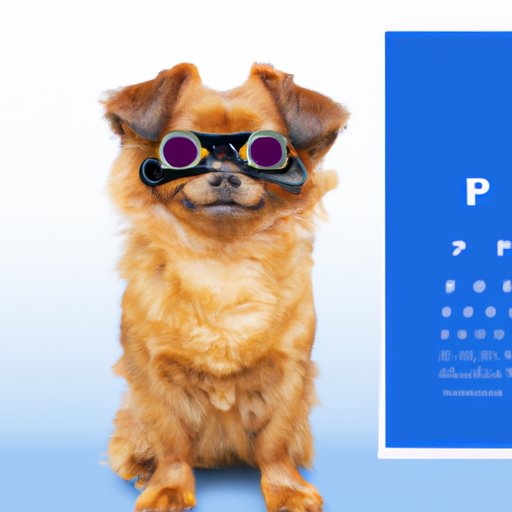Introduction
Cataracts are an eye disorder that affects dogs just as they do humans. As the lens of the eye becomes cloudy, it causes a decrease in vision or even blindness. It’s important to understand how cataracts affect your dog so you can take steps to help them manage the condition. In this article, we’ll explore the various ways you can help your dog with cataracts.

Visit the Veterinarian for an Eye Exam
The first step in helping your dog with cataracts is to take them to the veterinarian for an eye exam. During the exam, the vet will check for signs of cataracts and other eye disorders. They may also perform a tonometry test to measure the pressure within the eye. If cataracts are detected, the vet may recommend further testing such as an electroretinogram (ERG).
Regular eye exams can help catch any changes in your dog’s vision before they become too severe. The vet can also recommend treatments or medications to help slow the progression of the cataracts. Additionally, these appointments give you the opportunity to ask questions about your dog’s health and get advice on how to best care for them.
Provide a Nutritious Diet
Good nutrition is essential for maintaining overall health, including eye health. Feeding your dog a balanced diet with plenty of protein, vitamins, and minerals can help reduce the risk of developing cataracts. Some foods that are beneficial for eye health include carrots, sweet potatoes, salmon, eggs, and blueberries.
It’s also important to make sure your dog is getting enough vitamins and minerals. Talk to your veterinarian about supplements that can be added to your dog’s diet to help promote eye health. These may include omega-3 fatty acids, lutein, and zeaxanthin.

Administer Eye Drops as Prescribed by Your Veterinarian
If your veterinarian has prescribed eye drops for your dog, it’s important to follow their instructions. Eye drops can help reduce inflammation and irritation, and they can also help improve vision. Common eye drops used to treat cataracts include corticosteroids, nonsteroidal anti-inflammatory drugs, and carbonic anhydrase inhibitors.
Be sure to follow the dosage instructions carefully and use only the type of eye drops recommended by your vet. If you have any questions about administering the eye drops, don’t hesitate to ask your veterinarian for clarification.
Utilize a Soft-Tissue Laser Treatment
Soft-tissue laser treatment is another option for treating cataracts in dogs. This type of treatment uses low-level lasers to break up the cloudy areas of the lens and improve vision. The procedure is minimally invasive and can be done in the comfort of your home under the guidance of your veterinarian.
Soft-tissue laser treatment can offer a number of benefits for dogs with cataracts. It can help reduce inflammation, improve vision, and even prevent further damage to the lens. Additionally, some studies have found that it can improve the success rate of cataract surgery.
Invest in Protective Eyewear
Protective eyewear, such as goggles or sunglasses, can help protect your dog’s eyes from further damage. Many types of eyewear are available, including ones specifically designed for dogs with cataracts. When selecting eyewear for your dog, look for ones that are comfortable, lightweight, and provide adequate protection from the sun and other elements.
Additionally, if your dog spends a lot of time outdoors, consider investing in a pair of prescription glasses. These can help improve your dog’s vision and make it easier for them to navigate their environment.
Implement Regular Exercise and Playtime
Exercise is an important part of managing cataracts in dogs. Regular physical activity can help reduce stress, improve vision, and maintain muscle tone and flexibility. Different types of activities, such as walking, running, swimming, and fetch, can all help keep your dog active and healthy.
Playtime is also important for dogs with cataracts. Playing with toys and interacting with other pets can help stimulate your dog’s mind and keep them engaged. Just be sure to choose age-appropriate activities and toys that are safe for your dog to use.
Conclusion
Cataracts can cause serious vision problems for your dog. Fortunately, there are a number of steps you can take to help them manage the condition. Visiting the veterinarian for regular eye exams, providing a nutritious diet, administering eye drops, utilizing a soft-tissue laser treatment, investing in protective eyewear, and implementing regular exercise and playtime can all help your dog with cataracts. By taking these steps, you can help ensure your dog remains healthy and happy.
(Note: Is this article not meeting your expectations? Do you have knowledge or insights to share? Unlock new opportunities and expand your reach by joining our authors team. Click Registration to join us and share your expertise with our readers.)
